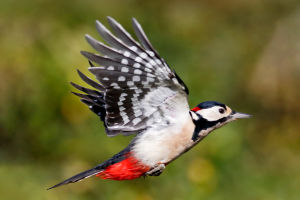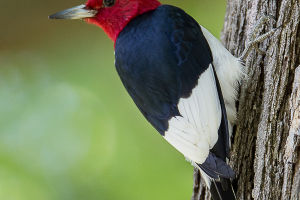Nestled amidst the verdant tapestry of woodlands across Europe and Asia, the Eurasian Sparrowhawk (Accipiter nisus) reigns supreme as a formidable hunter.
With its sleek form, keen eyesight, and lightning-fast reflexes, this bird of prey embodies the essence of a skilled woodland predator.
Habitat and Range:
The Eurasian Sparrowhawk is predominantly found in wooded areas, ranging from dense forests to urban parks and suburban gardens. Its vast distribution encompasses a broad swath of territory spanning Europe and extending into parts of Asia.
From the misty woodlands of Scandinavia to the dense forests of Japan, these agile hunters adapt to diverse habitats with remarkable ease.
Physical Characteristics:
Measuring around 30-40 centimeters in length, the Eurasian Sparrowhawk boasts a compact yet powerful build. Its broad wings enable swift and agile flight through dense vegetation, while its sharp talons and hooked beak serve as lethal tools for capturing prey.
Sporting a mottled brown plumage with distinctive barring on the underparts, the Sparrowhawk blends seamlessly into its woodland surroundings, rendering it an elusive predator.
Hunting Techniques:
Equipped with unparalleled stealth and precision, the Eurasian Sparrowhawk employs various hunting techniques tailored to its woodland habitat. Preferring to ambush its prey from concealed perches or execute lightning-fast pursuits through dense foliage, this avian predator is a master of surprise attacks.
Preferring small birds like sparrows, finches, and tits, the Sparrowhawk relies on its exceptional speed and agility to outmaneuver its quarry in the tangled forest canopy.
Adaptations for Woodland Hunting:
The Eurasian Sparrowhawk has evolved adaptations that are finely tuned for hunting in wooded environments. Its short, rounded wings facilitate rapid acceleration and agile maneuvering through tight spaces, while its long tail provides stability during high-speed pursuits.
Specialized feathers with soft fringes reduce aerodynamic noise, enabling silent flight and enhancing the element of surprise during ambushes.
Role in Ecosystem:
As an apex predator in woodland ecosystems, the Eurasian Sparrowhawk is crucial in regulating prey populations and maintaining ecological balance. By preying on small birds and rodents, it helps control their numbers, thereby preventing overpopulation and mitigating potential impacts on vegetation and other wildlife.
Additionally, Sparrowhawks serve as indicators of ecosystem health, with their presence often indicative of thriving woodland habitats teeming with biodiversity.
Conservation Status:
While the Eurasian Sparrowhawk remains widespread and relatively abundant across its range, it faces certain conservation challenges, including habitat loss, pesticide exposure, and collisions with man-made structures.
Conservation efforts aimed at preserving and restoring woodland habitats are essential for ensuring the long-term viability of Sparrowhawk populations.
Measures to mitigate human-induced threats, such as reducing pesticide use and implementing bird-friendly infrastructure, can help safeguard these majestic hunters for generations to come.
The Eurasian Sparrowhawk stands as a quintessential symbol of the woodlands, embodying the grace, power, and stealth of a true woodland predator.
With its unparalleled hunting prowess and intrinsic connection to forest ecosystems, this avian marvel continues to captivate and inspire all who venture into the enchanting realm of the woods.


